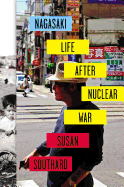
Despite the devastation and immediate loss of life caused by dropping an atomic bomb on Hiroshima, three days later, on April 9, 1945, the United States dropped a second nuclear bomb, on the Japanese fishing town of Nagasaki. Susan Southard has written a forceful, almost minute-by-minute account of the day that bomb exploded, and the days, months and years that followed as seen and experienced by five residents of Nagasaki who were teenagers at the time. Southard vividly describes the wasteland that immediately appeared in the hypocenter, the area directly underneath the explosion. "Inside the city, the bomb's deadly gale quieted, leaving Nagasaki enveloped in a dark, dust-filled haze. Nearest the explosion, almost everyone lay incinerated, and those still alive were burned so badly they could not move."
Readers learn the stories of the five interviewees, and Southard does an excellent job of portraying the emotional pain, angst and shame they feel for having survived the blast, of being hibakusha ("explosion-affected people"). She follows these five through their adult lives, chronicling their achievements and their continuing medical problems due to radiation poisoning--all of which highlight their extreme resilience and desire to live despite horrible odds.
Nagasaki is explicit and penetrating, a haunting and humane look at one of the most contentious acts of war in world history. Southard provides a voice to the thousands who died and for those who have suffered for the past 70 years. --Lee E. Cart, freelance writer and book reviewer

